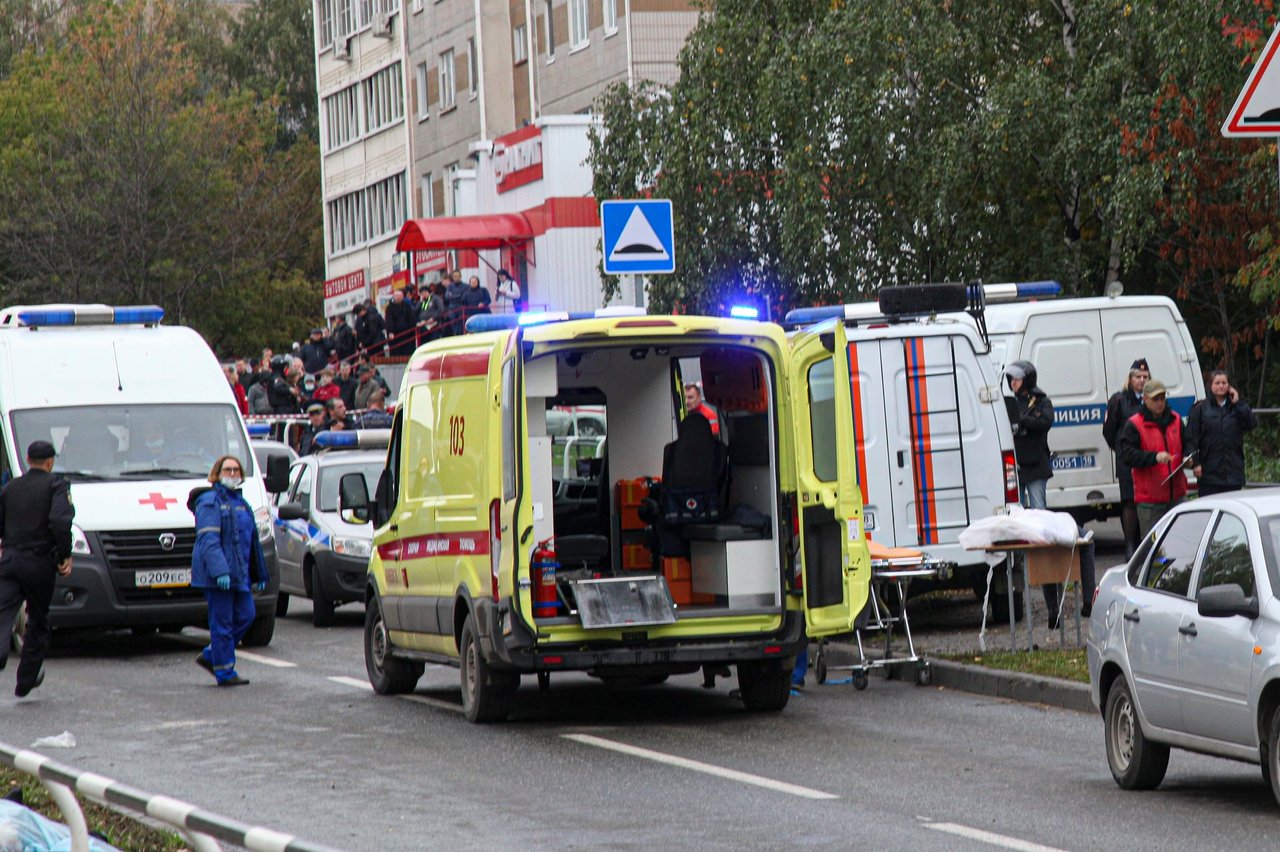(CN) — The war in Ukraine may be turning into a unifying cause for Russia and its 142 million inhabitants with signs that thousands of Russian men are signing up for combat duty on the front lines following a mobilization order issued by Russian President Vladimir Putin last week.
Russians were given further reason on Monday to back the war against Kyiv and NATO and see it as a struggle against neo-Nazis after a 34-year-old man wearing a black T-shirt emblazoned with a swastika entered a school in Izhevsk, a city near the Ural Mountains, and killed 11 children before committing suicide. In all, at least 15 people were killed and 22 other children and adults were wounded in the attack, Russian media reported. Russia has suffered a spate of school shootings in recent years.
The details and motives of the shooting remained largely unclear, but Russian sources were already making links to Ukrainian nationalist and terrorist groups. Putin denounced it as an “inhuman terrorist attack” by someone who “apparently belongs to a neo-fascist group.”
The gunman was identified as Artyom Kazantsev, a former graduate of the school. Reportedly, he was a patient at a psychiatric clinic.
In launching the invasion of Ukraine, Putin has sought to justify his war as a fight against “Nazis” who've taken over the government in Kyiv and repressed Ukraine's Russian populations.
Such rhetoric about Nazis carries a lot of emotional weight in Russia. The Soviet Union lost more than 10 million troops during World War II fighting Nazi Germany and about 14 million civilians were killed.
Ukraine's nationalist movement, which began in the 19th century in opposition to oppression of the Ukrainian language and culture under the Russian Empire, sided with Nazi Germany during the war and fought against Soviet troops in a bid to create an independent nation. In recent years, Ukraine has made nationalist leaders, including Nazi collaborator and war criminal Stepan Bandera, into heroes, further stoking Russian anger.

Ukrainian nationalists – aided by the U.S. Central Intelligence Agency – continued a failed guerrilla war against the Soviets into the 1950s. Soviet dictator Stalin used brutal force against Ukrainian nationalists and sent tens of thousands of Ukrainians into exile in Siberia and Kazakhstan.
There is lots of evidence that neo-Nazi groups played important roles in violent protests that led to the overthrow of Viktor Yanukovych, a democratically elected pro-Russian Ukrainian president, in February 2014, during the so-called “Revolution of Dignity” or “Maidan Revolution.”
Those events, described by many scholars as either a coup d'etat or a popular uprising against a kleptocratic bully, precipitated Ukraine into chaos and a state similar to a civil war that saw pro-Western Maidan supporters battling pro-Russian anti-Maidan opponents.
The crisis turned catastrophic – and global – after Russian troops based in Crimea, where Moscow has its Black Sea Fleet at Sevastopol, seized the peninsula in a mostly bloodless takeover from Ukrainian forces.
Crimea, where a majority of the population is ethnic Russian, was annexed by the Kremlin into the Russian Federation following a referendum deemed a sham by most of the world.
Similar referendums are taking place now in four Ukrainian regions mostly under the control of Russian troops. The referendums will end on Tuesday.
Putin is expected to announce later this week that inhabitants in the four oblasts, as regions are called in Ukraine and Russia, have voted to join Russia.
Such an annexation move would exacerbate even further a war that is spiraling out of control as the West vows to defeat Russia and ensure Ukraine recaptures all of the territory it has lost in the seven months of fighting since Putin ordered 200,000 troops to invade on Feb. 24. Western weapons and financial aid continue to pour into Ukraine, a nation of some 42 million people that has itself become unified by Russia's invasion and war.









